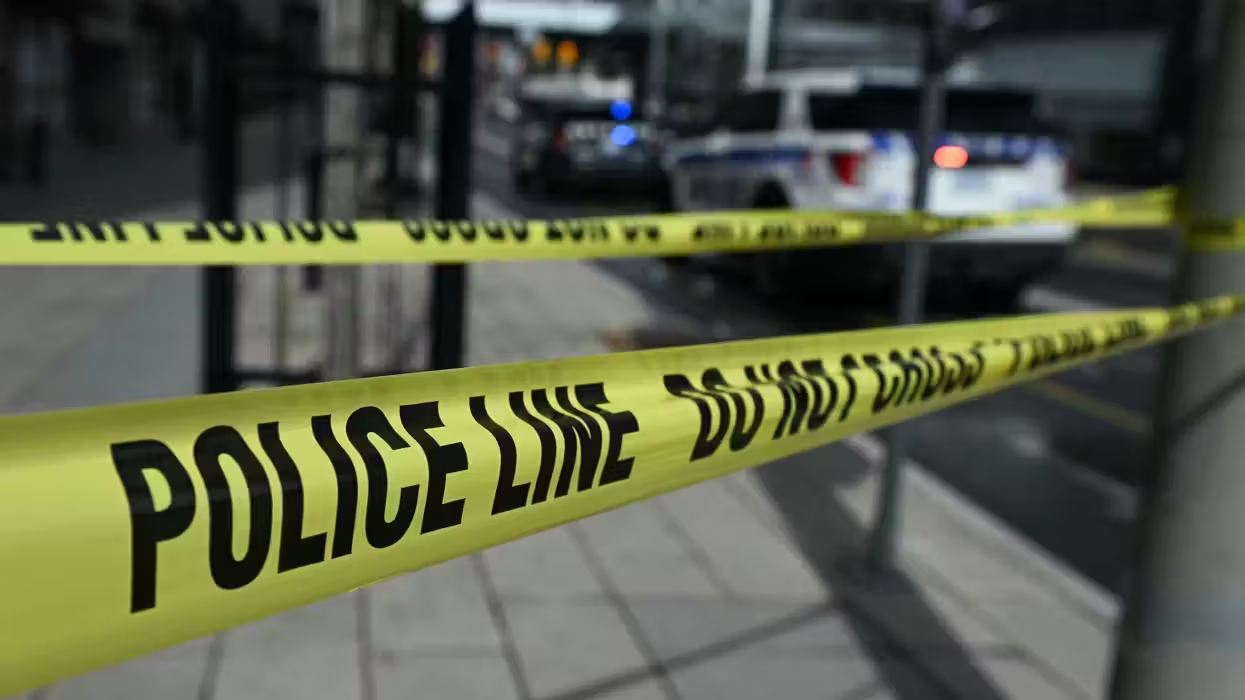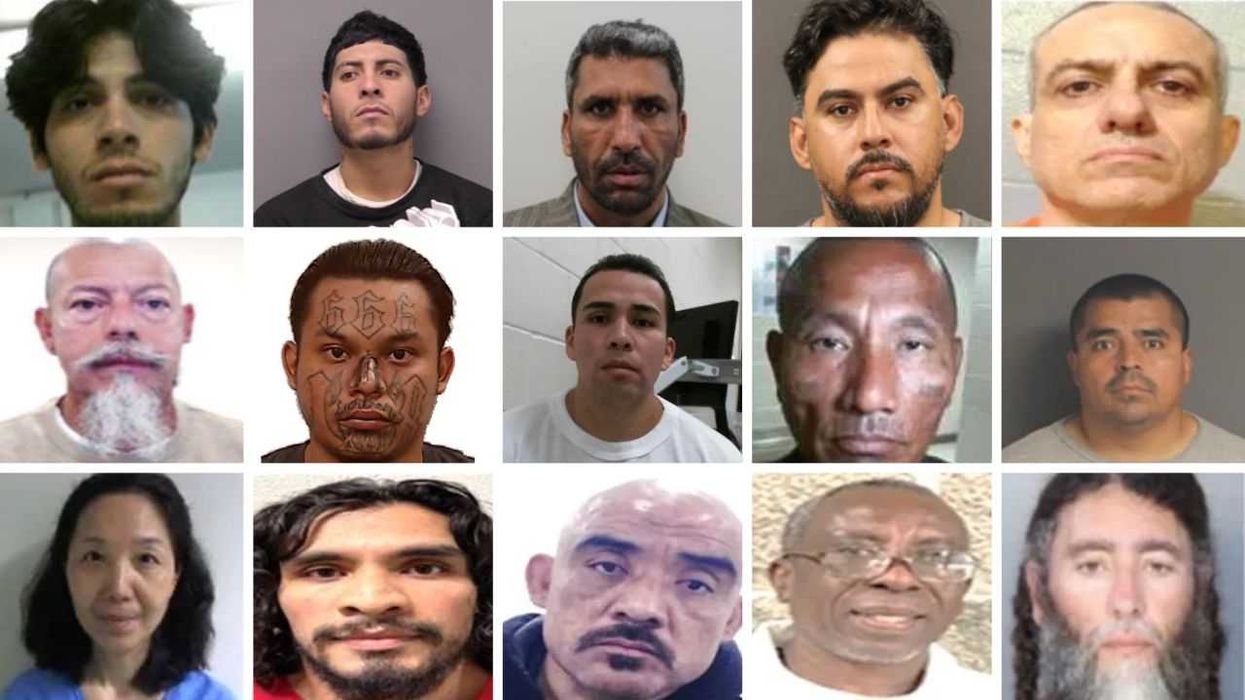
© 2025 Blaze Media LLC. All rights reserved.
Here's the Ironic Explanation Behind the Super Bowl's Blackout (Beyoncé and Illuminati Not Involved)
February 08, 2013
"I'm pleased that we were able to find the root cause."
NEW ORLEANS (TheBlaze/AP) -- Super Bowl fans were stunned when the New Orleans Superdome suffered a game-delaying power outage shortly after the halftime show Sunday. Theories as to what caused the blackout were trending early in the week -- among them were Beyoncé and her potential Illuminati connections, cyberterrorism and 49er fans hoping to turn the game around -- but it wasn't until Friday when an official cause was announced.
It was actually due to an electrical device that had been installed expressly to prevent a power outage, the stadium's power company said, as it took the blame for the outage that brought the game to a halt for more than a half-hour.
 David Akers #2 of the San Francisco 49ers waits during a power outage that occurred in the third quarter that caused a 34-minute delay during Super Bowl XLVII against the Baltimore Ravens at the Mercedes-Benz Superdome on February 3. (Photo: Ezra Shaw/Getty Images)
David Akers #2 of the San Francisco 49ers waits during a power outage that occurred in the third quarter that caused a 34-minute delay during Super Bowl XLVII against the Baltimore Ravens at the Mercedes-Benz Superdome on February 3. (Photo: Ezra Shaw/Getty Images)
Officials of Entergy New Orleans, a subsidiary of New Orleans-based Entergy Corp., said the device, called a relay, had been installed in switching gear to protect the Superdome from a cable failure between the company's incoming power line and lines that run into the stadium.
Watch this report about the cause from CBS out of Miami:
The switching gear is housed in a building known as "the vault" near the stadium that receives a line directly from a nearby Entergy power substation. Once the line reaches the vault, it splits into two cables that go into the Superdome.
Company officials said the device performed with no problems during January's Sugar Bowl and other earlier events, but has been removed and will be replaced. All systems at the Superdome are now working and the dome will host a major Mardi Gras event Saturday night, said Doug Thornton, an executive with SMG, the company that manages the stadium for the state.

The power failure at Sunday's big game cut lights to about half of the stadium for 34 minutes, halting play between the Baltimore Ravens and San Francisco 49ers.
The FBI had ruled out cyberterrorism as a cause.
Entergy's announcement came shortly before officials appeared before a committee of the City Council, which is the regulatory body for the company, to answer questions about the outage.
Entergy New Orleans CEO Charles Rice and Dennis Dawsey, an Entergy vice president for distribution, told the Council that SMG agrees the cause of the outage was a relay failure. Asked if the two corporations still plan to hire a third-party investigator, Rice said that possibility remains open.
 Charles Rice, President and CEO of Entergy New Orleans, talks about the power outage during the Super Bowl, at a news conference at City Hall in New Orleans. (Photo: AP/Jonathan Bachman)
Charles Rice, President and CEO of Entergy New Orleans, talks about the power outage during the Super Bowl, at a news conference at City Hall in New Orleans. (Photo: AP/Jonathan Bachman)
Committee member Jackie Clarkson pressed for such an independent probe. "We've told the public we're going to have an outside investigation," she said.
"We'll work closely with SMG and if there is a need for a third-party investigation, we will do that," Rice said.
It remains unclear whether the problem with the relay was a design flaw or a manufacturing problem. Rice said Entergy is working with the manufacturer.
"I'm pleased that we were able to find the root cause," Thornton said.
Shabab Mehraeen, an assistant professor of electrical engineering at Louisiana State University, said the relay device is a common electrical fixture in businesses and massive facilities such as the Superdome.
"They are designed to keep a problem they sense from becoming something bigger, like a fire or catastrophic event," said Mehraeen, who holds a doctorate from the Missouri University of Science and Technology in Rolla, Mo.
The devices vary in size, and while Mehraeen noted he was not familiar with the specifics of the relay at the Superdome, he added, "I wouldn't be surprised if it was bigger than a truck."
Mehraeen said the reasons the devices fail are the subject of much academic research into the interaction of relays with the complex electrical systems they regulate.
"It's not unusual for them to have problems," he said. "They can be unpredictable despite national testing standards recommended by manufacturers."
Entergy and SMG had both upgraded lines and equipment in the months leading up to the Super Bowl. Rice said the new switching gear, with the faulty relay, was installed as part of a $4.2 million upgrade by Entergy, including the installation of a new power line dedicated solely to the stadium.
In a separate project, SMG replaced lines coming into the stadium after managers expressed concerns the Superdome might be vulnerable to a power failure like the one that struck Candlestick Park during a 49ers Monday Night Football game in 2011. That outage was blamed at least partly on a transformer explosion.
Thornton stressed Friday that the dome was drawing only about two-thirds of its power capacity Super Bowl night, and said typical NFL games in late August or September can draw a little more.
City officials had worried that the Super Bowl outage might harm New Orleans' chances of getting another NFL championship game.
But NFL Commissioner Roger Goodell downplayed that possibility after the outage, saying the NFL planned to keep New Orleans in its Super Bowl plans. Mayor Mitch Landrieu said the city intends to bid for the Super Bowl in 2018.
--
Related:
Want to leave a tip?
We answer to you. Help keep our content free of advertisers and big tech censorship by leaving a tip today.
Want to join the conversation?
Already a subscriber?
more stories
Sign up for the Blaze newsletter
By signing up, you agree to our Privacy Policy and Terms of Use, and agree to receive content that may sometimes include advertisements. You may opt out at any time.
Related Content
© 2025 Blaze Media LLC. All rights reserved.
Get the stories that matter most delivered directly to your inbox.
By signing up, you agree to our Privacy Policy and Terms of Use, and agree to receive content that may sometimes include advertisements. You may opt out at any time.






